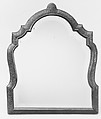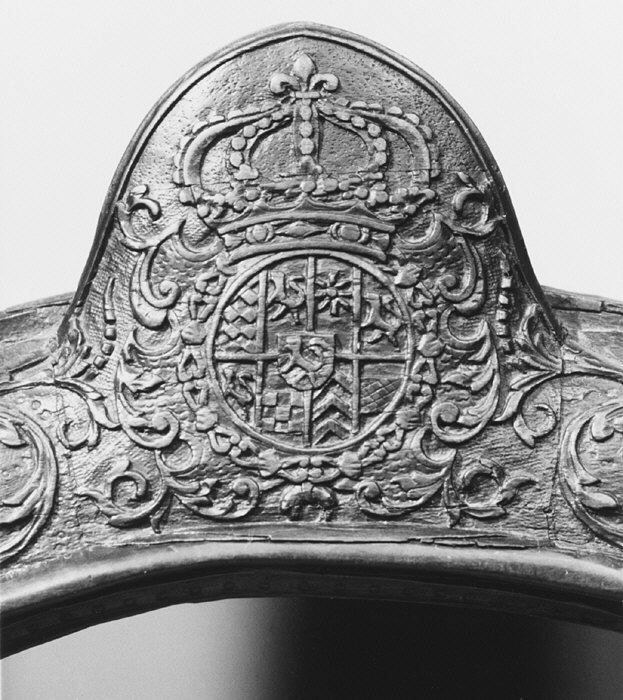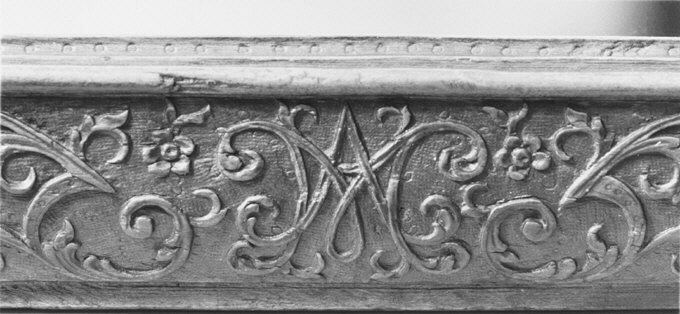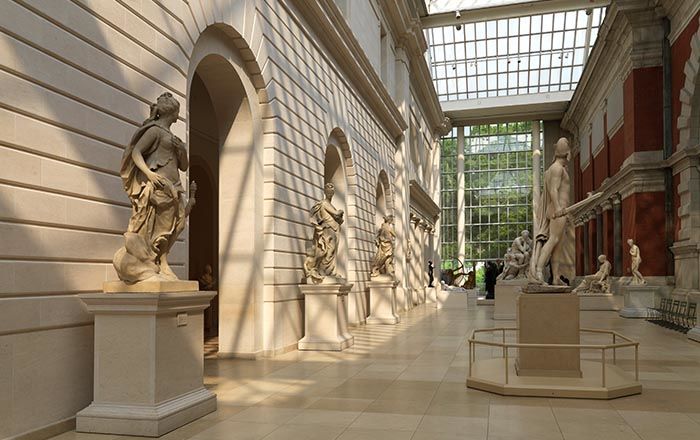Mirror (part of a set)
Not on view
This mirror would have been part of a larger set to be used on a dressing table together with various boxes, candlesticks, brushes and a pin cushion, all decorated in the same manner. The carved ornament in low relief on its frame is typical for a group of pieces made in Nancy, in eastern France. The very fine-grained cherry wood, known as “bois de Sainte Lucie,” grew in a nearby forest. Named for the patron saint of the Lorraine region, this type of fruitwood was appreciated for its reddish-brown color and its pleasant smell reminiscent of cinnamon. Furthermore, it lent itself beautifully to carving often in intricate patterns resembling goldsmith work. The mirror and related pieces in the Met’s collection (63.42.2 through .7) are unsigned, but they might have been created by a member of the Foullon dynasty of so-called “sculpteurs en petit,” known for this type of work.
The use of “bois de Sainte Lucie” for dressing-table sets was stimulated by Louis XIV’s sumptuary edicts of 1689 and 1709, which caused much French silver to be melted down. Like their prototypes, the individual elements of such a set could be personalized with monograms or coats of arms and might have been commissioned as gifts. The mirror frame has both a coat of arms as well as the monogram MA or AM. The coat of arms, surmounted by a ducal coronet and encircled by the order of the Golden Fleece, are those of Philip William of Neuburg (b. 1615), Elector Palatine (1685-1690), who became a Knight of the Order of the Golden Fleece in 1653. Although the mirror, the various boxes and candlestands were acquired by the Museum at the same time, they were not part of one and the same set.
This image cannot be enlarged, viewed at full screen, or downloaded.
This artwork is meant to be viewed from right to left. Scroll left to view more.




